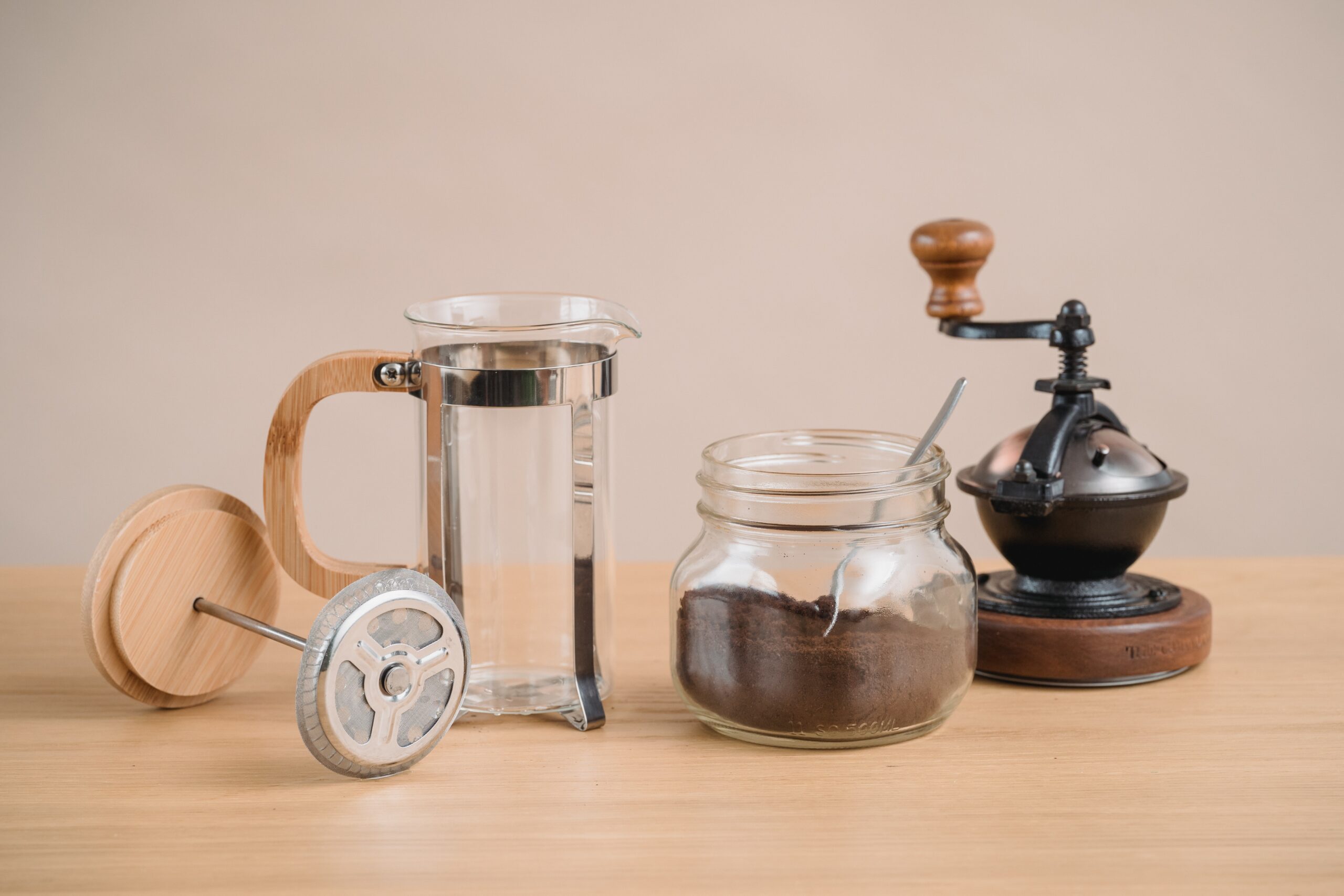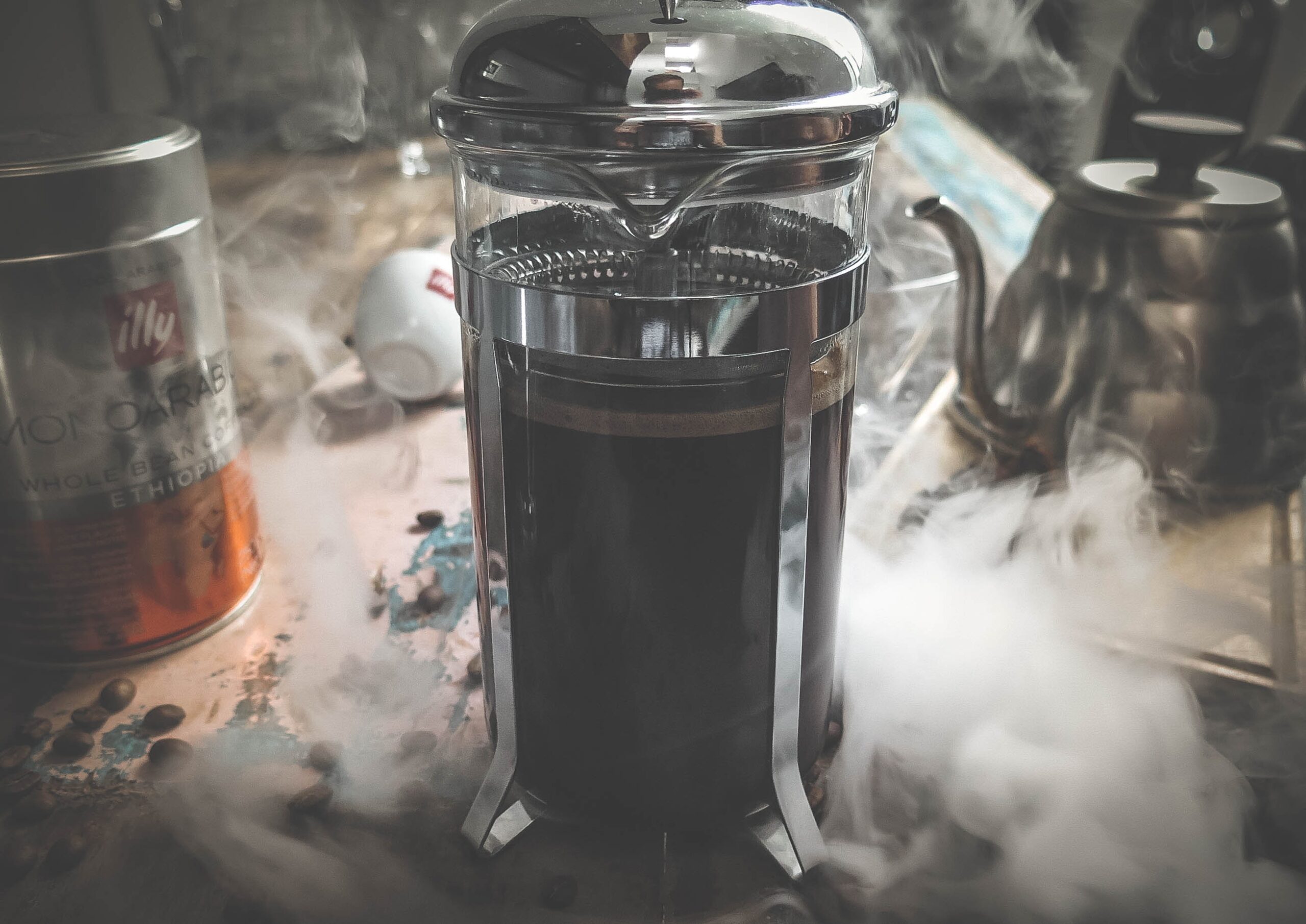If you’re considering buying a French press, one of the first questions you probably have is, “is a glass or stainless steel French press better?” In most cases, the answer is stainless steel. There are a few reasons for this, although there are some areas where glass French presses shine as well.
In this guide, I’ll be explaining the primary differences between glass and stainless steel French presses, which one is better for which purposes, and how to decide which is the right option for you.
Glass Vs. Stainless Steel: Why Material Matters for Your French Press
First off, you might be asking: why do I even need to consider the differences between glass and metal French presses? Why can’t I just buy the cheapest one or the one that looks the nicest?
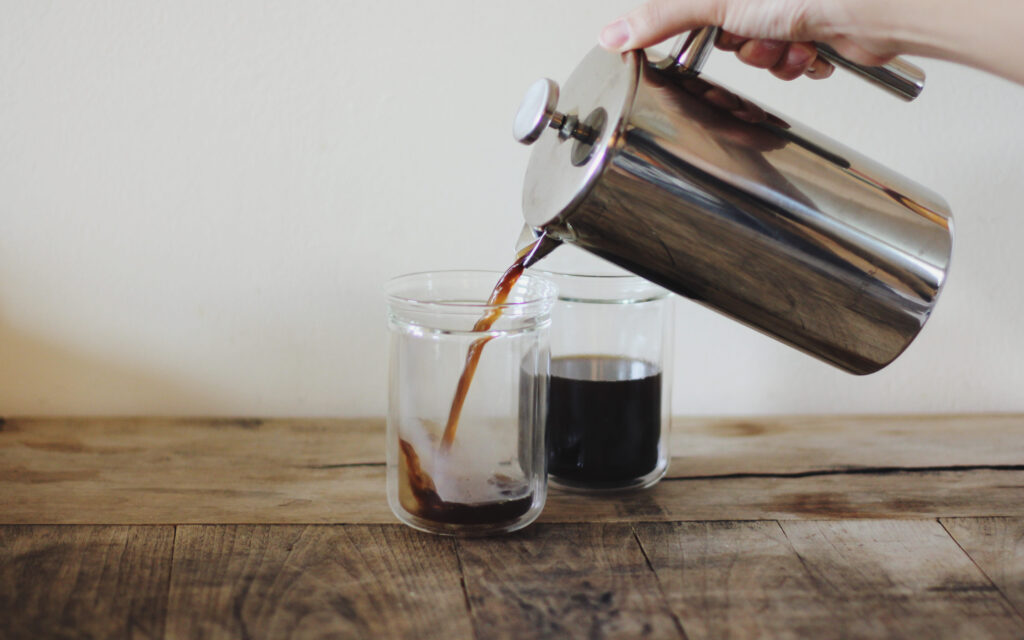
Well, although French press is a comparatively simple brewing process compared to pour over, espresso, and other brewing methods, there are a few things you need to get RIGHT in order to make delicious coffee. Plus, the material affects how durable and expensive your French press is. I’ll discuss all of the primary differences between glass and stainless steel French presses in the sections below.
How Material Affects Effective Strike Temperature and Heat Loss From the Brewing Chamber
The strike temperature is the temperature of your water when it’s first mixed with your coffee grounds. This is an important factor to consider when brewing because different compounds are pulled out of coffee grounds at different temperatures, and the rate at which those compounds are extracted varies based on the temperature as well.
This is also why the temperature of your brewing coffee over time matters. As you progress through the brewing process, you’ll pull the following compounds in the following order:
- Acids that contribute to sour, salty, or acidic flavors
- Fats that contribute to a dense mouthfeel and full flavor
- Natural sugars that leave a slight sweetness in your cup
- Plant fibers that contribute bitter flavors, which can balance out the acidity and sweetness
How these compounds are extracted and to what extent they’re extracted are both affected by how well you control the heat in your French press from start to finish.
Those first few moments that your water is pulling compounds from your grounds are crucial. If your water temperature dips too low, you’ll be setting yourself up for under-extracted coffee.
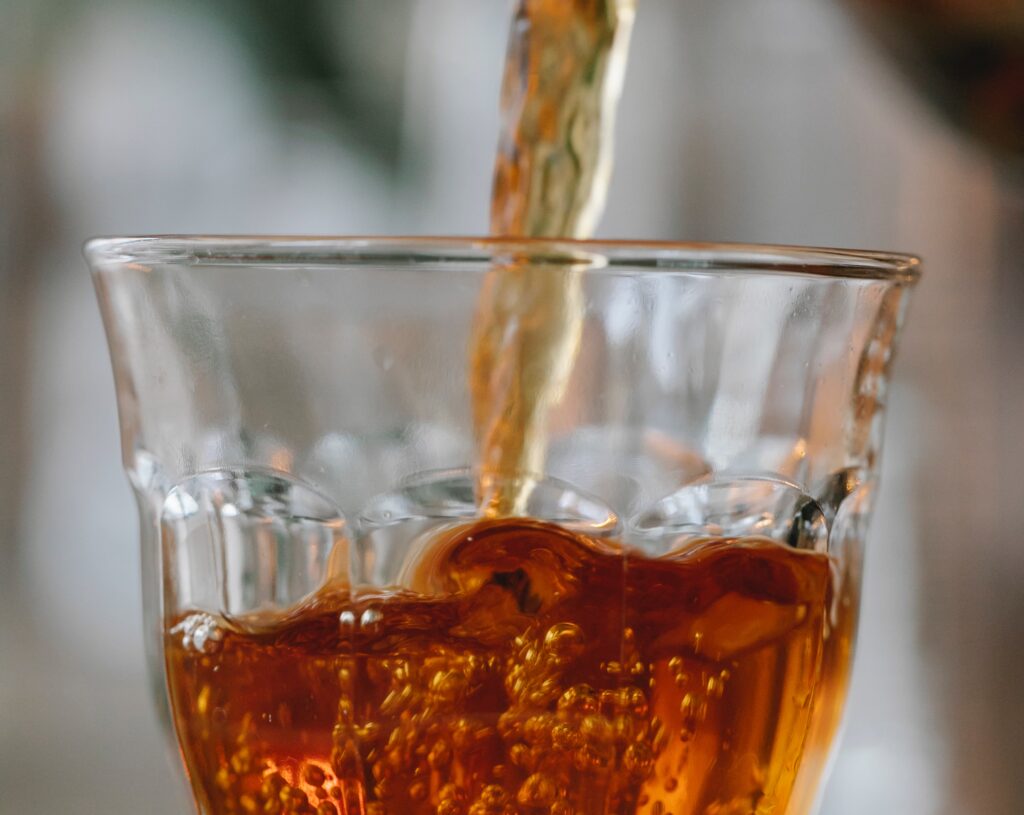
The first compounds pulled from your coffee grounds will be acids and fats. The acids include:
- Chlorogenic acid
- Quinic acid
- Citric acid
- Acetic acid
- And several others in smaller quantities.
The fats or lipids that are extracted shortly after mixing your hot water and grounds include triacylglycerols (fatty acids) and a series of other fatty compounds and oils. These include diterpenes like cafestol and kahweol.
What does all this nerdy stuff mean? Well, it means that if your water temperature dips too low at the beginning of your brewing, you’ll be left with coffee that is high in acids and fatty compounds and lower in the compounds that are pulled out later in the brewing process. Your coffee will likely taste overly acidic and have an overly dense mouthfeel. Some people will taste sourness or saltiness, depending on the acids that are extracted.
So, not losing a ton of heat early on in the brewing process will let you get to the extraction of those delicious sugars and balancing bitter agents in your coffee grounds. You may already see where I’m going with this…
Stainless steel carafes have a high thermal conductivity, which means your strike temperature will quickly drop in steel French press that isn’t preheated. As such, a glass French press will provide more even extraction at the beginning of the brew and is, therefore, a better option on the surface.

However, metal French presses are far more likely to have a vacuum-sealed chamber between two metal walls, which is ideal for consistent brewing. A double-wall glass French press will be better than a double-wall steel French press, but only marginally. Plus, most glass French presses come in single-wall options only, which means they’re not generally the best French press coffee maker option.
Provided you have a double-wall stainless steel French press — my #1 recommendation — and preheat it, you’ll see no negative impact on the flavors in your coffee from strike temperature changes or changes in brewing temperature over time.
In a double-wall stainless steel carafe, you’re likely to maintain the optimal brewing temperature — between 190 and 210 degrees (F), and more ideally, between 195 and 205 degrees (F) — for the full four minutes that you’re brewing. That means you’ll get even amounts of all of the following compounds:
- Acids for brightness and fruitiness
- Fats for full flavor and mouthfeel
- Sugars for sweetness
- Plant fibers for bitterness and balance
With a steady brewing temperature, you’ll get the ideal ratios of these compounds for a cup that will knock your socks off morning after morning. And this isn’t to say that glass French presses don’t make good coffee. They do…it’s just that a double-wall steel French press is basically as good as any glass one you can buy, and it’s going to be way more durable. Speaking of durability…
How Material Affects Durability
Another thing to consider is how the material affects the expected lifespan and durability of your French press.
As you can probably imagine, glass is way more likely to break than stainless steel. With a glass French press, one drop or accidental bump against the counter or your kitchen sink faucet during cleaning, and you could crack the carafe.
As you can also imagine, you’re probably most likely to make a mistake and drop or bump your French press early in the morning when your mental faculties aren’t as sharp as they will be after your first cup of coffee.
Glass can also crack from rapid changes in temperature, which are common occurrences when you’re filling your French press with boiling water to brew and then washing it in the sink. Repeated changes in temperatures will weaken the glass over time and can eventually cause cracking.
You just never run into these issues with a stainless steel French press. Metal won’t expand enough in the normal temperature changes in a French press to crack or warp. Also, I’ve dropped my metal French press a handful of times and have never had any issues. It still looks good as new, despite the fact that I’ve used it every day for about ten years.
As I’ll discuss in the next section, many people choose glass French presses because they’re cheaper. However, I believe you’ll probably spend less in the long run if you just buy a more expensive stainless steel French press the first time around. I cracked three or four glass French presses within as many years. I’ve now had my metal French press for over a decade, and I expect many more years of use out of it.
How Material Affects Cost
Finally, the material of your French press will play a role in how much it costs. For equivalently sized French presses, you’ll pay less for a glass one than you will for a stainless steel one.
This is especially the case if you’re looking for a double-wall French press to help maintain a consistent temperature during the brewing process. The manufacturing costs for double-wall glass are a bit higher, so buying a highly insulative glass French press will cost you more, on average.
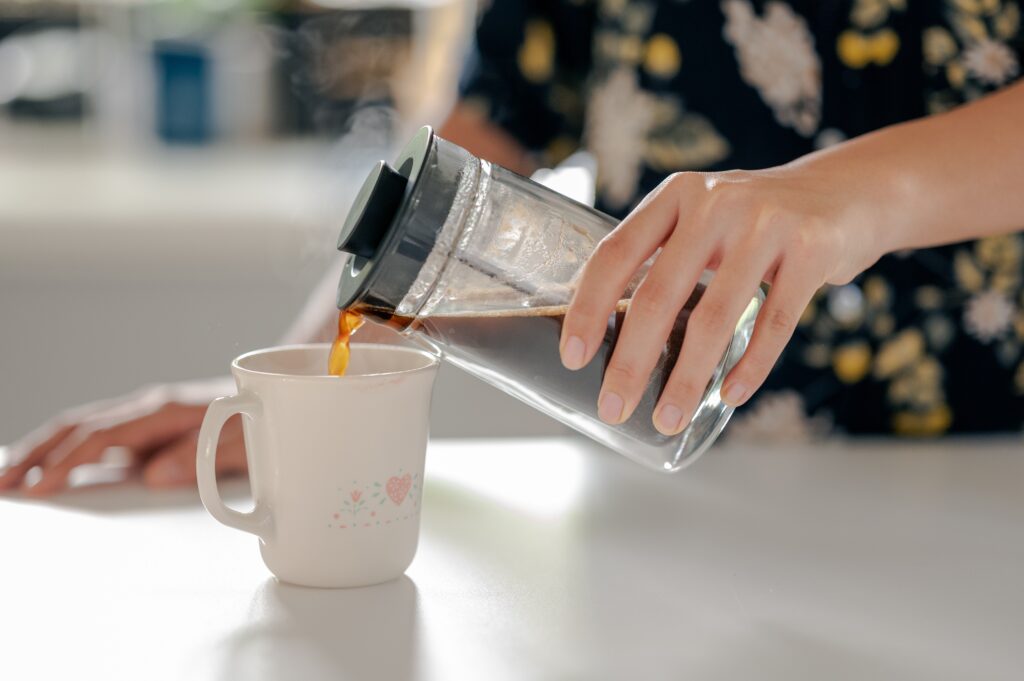
Wrapping Up: Which Is Better, A Glass or Stainless Steel French Press
Generally speaking, a double-wall stainless steel and glass French presses are both going to be suitable for maintaining the ideal brewing temperature, which yields an overall better cup of coffee that is more balanced. Both glass and stainless steel can be good options for French presses, but you’ll typically pay more for a double-wall glass French press than you would for a stainless steel one.
Additionally, stainless steel is far more durable and will tend to last longer because it won’t crack or shatter if you drop it or bump it against surfaces like your countertop. I recommend a double-wall stainless steel French press over a glass one for most coffee aficionados.
FAQ
What’s the difference between a glass and stainless steel French press?
Both glass and stainless steel French presses can be great for making coffee, but there are a few differences between the two to be aware of.
First off, stainless steel will pull more heat from your brewing water when you first pour it because it has a lower specific heat and a significantly higher conductivity. A metal French press should really be preheated, and even then, it will continue to pull more heat from your coffee than a glass French press would, as it irradiates heat to the surrounding air more readily.
However, a preheated double-wall stainless steel French press is my top recommendation, as it’s plenty good enough for heat retention and has other advantages as well.
One such advantage is that stainless steel is far more durable than glass. You can drop a steel French press many times over without any issues, while a single drop for a glass French press will usually necessitate a total replacement.
Finally, stainless steel will never crack due to rapid or repeated temperature changes, and glass will. Overall, glass French presses will just never last as long as stainless steel ones, despite being more expensive.
Do I need a double-wall French press?
You don’t necessarily NEED a double-wall French press, but it’s highly recommended that you get one. Regardless of the material, a double wall will help insulate your brewing coffee from the outside air, which helps regulate the temperature at which you brew. This is crucial for getting a balanced cup of coffee with even extraction.
Both glass and stainless steel French presses can come with double walls, but glass ones will usually be more expensive and harder to find.
Is French press coffee bad for you?
French press coffee isn’t passed through a paper filter like pour over or drip coffee is. While one reason to use a paper filter is to remove the grounds from your brewed coffee, the other reason is to soak up oils that naturally appear in coffee.
Two oils, in particular, pose a potential problem for your health — cafestol and kahweol. These have both been linked to higher cholesterol levels. For most generally healthy people who have an otherwise healthy diet and no pre-existing issues with high cholesterol, French press coffee shouldn’t present too much of an issue. However, a different brewing method might be ideal for anyone with cholesterol problems or concerns about high cholesterol.
Why does my French press coffee taste bad?
There are a few reasons your French press coffee might not taste right, and the solution depends on what you’re experiencing in your cup.
If your French press coffee tastes sour, it’s under-extracted. You should start by grinding your coffee a bit finer, but you can also increase your strike water temperature a bit. Especially if you’re using a metal French press and aren’t preheating the chamber, you could be losing too much heat to the room, which drops extraction.
If your French press coffee tastes unpleasantly bitter, it’s over-extracted. Try grinding a bit coarser or dropping your strike water temperature a touch. If you’re using boiling water, the water might be the issue. Otherwise, I’d remedy the problem with grind size.
If your French press coffee tastes too acidic, your extraction could be off, or the beans could be stale. If you know you have fresh beans, try grinding a little finer to increase extraction or increasing your water temperature a little.
